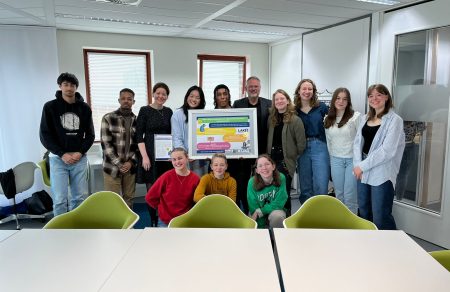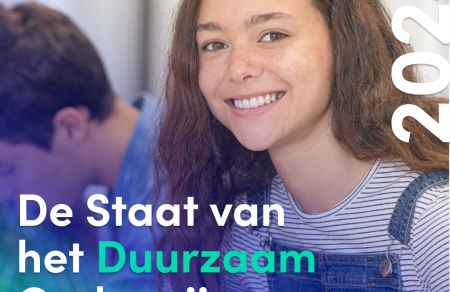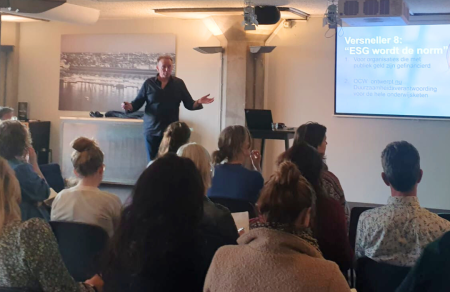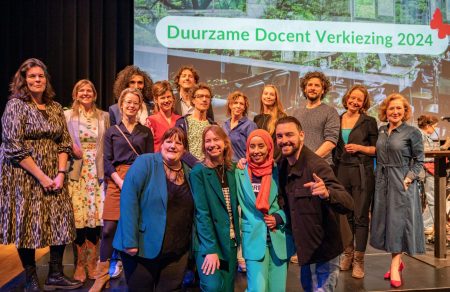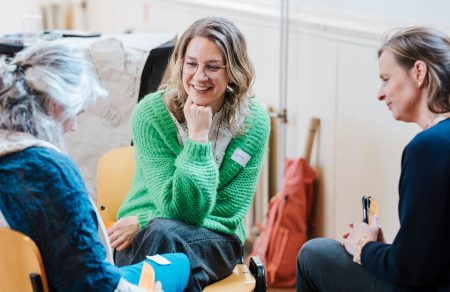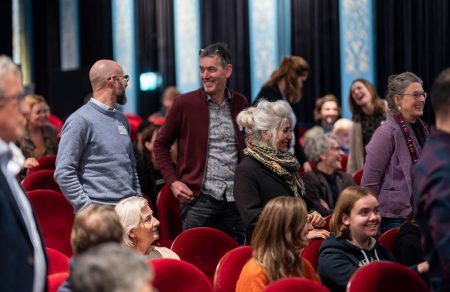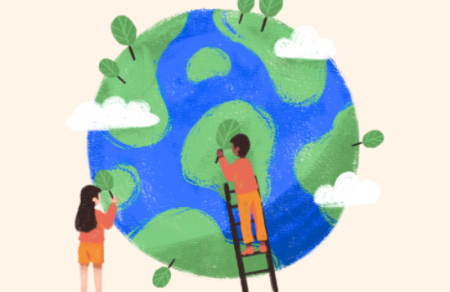First of all, what is serious gaming?
Steven: "Most people assume that you learn nothing from a game, but practice tells us otherwise. For example, there are plenty of children who learn English through a game like 'Fortnite', because they need this to communicate with other players. In most games you need certain skills to win, in serious gaming you train those skills in a very focused way. That's the difference between playing a game as entertainment and what we make. In serious gaming, we always make a feedback to the learning process."
What does this look like in practice?
Steven: "We mainly get questions from an education. For example, a business administration course came to us because they wanted to teach their students the disc model (a model for gaining insight into someone's personality). Normally we give students a book, then you talk about it in a lesson or lecture and eventually an exam follows. With serious gaming we say: if you really want to familiarize students with the disc model, you have to let them experience it. You can just use an existing game for that. Keep talking and nobody explodes is a good example. This is a game where you have to dismantle a bomb in pairs. One player has the overview of the bomb and the other only sees a manual, so you have to work together. The communication you use for this can be used very nicely to illustrate to students what those different roles in the disc model look like and what influence they have on each other. We also ask students to be very destructive, for example, to see how your partner anticipates this. This way you can show nuances of the theory in practice. You can't really capture this in a book.
Students respond well to this, they are very enthusiastic about this methodology. We always ask participants the questions: what have you learned and what will you take with you to your studies? We also notice this in the requests from educational institutions: there is more and more enthusiasm and interest.
How did you come to know about circularity?
Steven: "We were asked by the Circular Skills project if we could do something with circularity. How could you use a game to teach someone what circularity is? First I went and researched what the concept meant exactly. We wanted to give shape to the quest I went through myself in a game. By playing the game you learn step by step to apply circularity in a micro economy that takes place on the board. We are now at the stage where there is a solid prototype, the next step is to turn this into a real board game."
How does the game play out?
Steven: "During the game you are the owner of a factory. You collect material from the supplier, process it into a product which you then sell on the market. But there will be leftover material. Your task is to sell as much as possible in x number of turns and thus collect as many points as possible. At the end of the game you have a number of points but a lot of waste left over. The question to the players is: how long do you think you can keep doing this?
In fact, a situation arises where you run out of raw materials and all that is left is waste. So what does it take, according to the students, to apply the idea of circularity: that's the conversation we're having.
We play the game three times, between each round students are given instructions to keep the process going longer. The only way to do this is to work together. Because the waste from your fellow players is together another new product that can be sold. This process of individualism to working together to keep the game going as long as possible is exactly the transition that business is going through on their way to circularity. So we explain this change in a game so that students can apply it themselves in the future. I think it's good to make students aware early on of what it looks like in practice. Especially if you look at where things are going in the hbo, there are more and more links to practice. For example, in our program all students work on a case and involve companies in it."
"The target group must be part of the development"
To what extent are students involved in the development of a game?
Steven: "The students are intensively involved in the whole process. I myself teach at the serious gaming master. I use such an issue as developing a circular game in my lessons. Students themselves come up with prototypes, assignments or issues that we have to include in the design. I will always continue to do that, the target group must be part of the development."
How did the target audience react to the first version of the circular game?
Steven: "The 'aha effect' was very present, at some point the penny dropped. I think that was one of the most important points to take away from these observations: can you learn what circularity means while playing from scratch and does it have a eureka moment? It is very important to have such a moment, especially on a complex topic like circularity. If you turn the whole process around and you learn it from practice it is always in a certain perspective. For example, on your internship you are told how the municipality applies circularity. It is then very difficult to apply the same principle outside the context. It should actually be taught from a very generic context, so that it is more useful in practice. I think that the way we explain it is one of the many ways to achieve this. I especially notice that students understand the concept and start thinking more circularly."
How circular is the game itself? Can you play it more often?
Steven: "I do believe in the 'replayability' (the degree to which a game remains fun if you play it more often) of this game, provided you don't keep playing it with the same people. I think you can see it as a one-time use in terms of target group, but in a teaching form you can of course continue to play it with different classes. But maybe I see it wrong. Maybe it's more of a discussion game and you throw it on the table during an evening of drinks to start a good conversation about the future."
What are some more ambitions you have with serious gaming?
Steven: "If you look at the circularity game you see that there is always a 'facilitator' acting as the game leader. There are still elements that need to be steered during the whole learning process. The translation of the game into insights and from there into applicability in practice. We still need to supervise this properly, but how we are shaping it now is very new. Games always have a manual, creators just have to hope that players get out of it what was intended beforehand. We all expect that learning will take place and that it will eventually be applied in practice, but I am not so sure about that. There is still a lot of room for serious gaming to think about this.
Ultimately, it should also be seen much more as a product that a teacher brings prior to a module on circularity. How nice it would be if you, as a teacher, first start with the game, then students work on an assignment and then they refer back to what they have learned in the game. As a teacher you then use the product yourself so that you are actively involved in learning. But anyway, that is still a dream. Ultimately, we are moving towards a situation in which instructors must ask their students, "What is going on at the moment and what do you need from me in order to learn? Your role will become much more of an expert who engages in conversation with students and less of a transfer of knowledge. What you need are products to have that conversation properly."
"The practice requires a different way of teaching."
Of course, this also requires certain skills from students, can they handle it?
Steven: "That's a very good question, because of the current school system you're eventually going to run into this problem. Practice demands a different way of teaching, but we send children through a process where they learn to listen. Finding the balance between that is something that's going to come into play very much now.
I think it's much more important for a student to look at who am I as a person, where do my talents lie and what skills can I develop with this. Students must be given the space to discover that. By doing this you create ownership, you are in charge of your own learning process."

